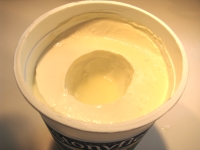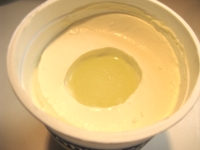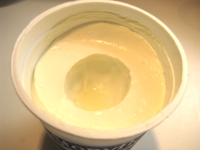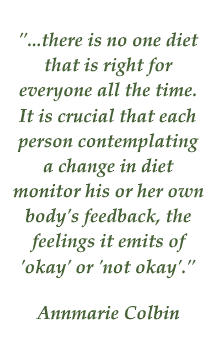The versatility of yogurt makes it easy to get probiotics in every meal
The incredible versatility of plain yogurt combined with its healthful properties, makes yogurt a wonder-food in my kitchen. Adding it to as many dishes as I can helps my gut health on a regular basis.
I'd been away from yogurt from many years, but it returned to my life a few years ago when I wanted to start soaking my grains with it. And I'm so grateful for its return. I now find yogurt absolutely indispensible in the kitchen.
Yogurt is a live food, full of living bacteria, or "beasties", as a friend of mine endearingly calls them, that perform a variety of beneficial functions in the human organism, as do the enzymes they produce. We live in a symbiotic relationship with them. A recent study estimated there are 10,000 different strains of living organisms within a human body that support its various functions, and life itself. We don't exist as a solitary and separate life form, but in an intricate balance with other life forms.

Pasteurized milk, from which yogurt is made, has been heated to temperatures sufficient to kill the living bacteria and destroy the enzymes inherent in raw milk. By introducing living yogurt cultures to this "cooked" milk, we return it to a "live" food. Some of the most important organisms we gain in this process are the lactic-acid-producing bacteria, or lactobacilli, which are destructive to pathogenic bacteria and unlike other beneficial organisms, survive in the stomach, the small intestine, and on into the large intestine.
Most "lactose-intolerant" individuals can handle yogurt, as most of the lactose has been broken down into lactic acid by these living bacteria.
The many uses of yogurt in the kitchen
In the kitchen, there are SO many uses for plain yogurt and each new dish you add it to, will now have the benefit of all those friendly little bacteria which will make your gut a "happy camper".
With little effort, you can get three distinct consistencies, each with its own specific uses, from one container of yogurt:
The normal purchased state of mixed whey and solids:
- great for eating plain or mixed with berries or another fruit (ok, this is the obvious one)
- add to salad dressings to make creamy dressings
- top hot breakfast cereals or porridges with it, such as Breakfast Quinoa
- use instead of milk in mashed potatoes
Separated whey which is watery-thin:
- use to soak grains before cooking
- make lacto-fermented vegetables and condiments
- use in meat marinades as a tenderizer
- add to vinaigrettes just for the health benefits
- save to use on your face as an astringent
- and, if nothing else, feed to your pets
Separated solids which are thick and creamy:
- use as a substitute for sour cream, cheese, and mayonnaise
- add to vegetable and grain dishes to make creamy (see Shrimp and Red Pepper Quinoa for an example)
- makes a great Homemade Frozen Yogurt
- use as a base for dips and spreads
When cooking with yogurt, the best nutritional value is maintained if you can avoid killing the live bacteria and destroying the enzymes. This makes cold dishes, such as fruit and vegetable salads, salad dressings, sandwich spreads, dips, toppings, etc, ideal for using yogurt. For hot dishes, whenever possible, add the yogurt last, after removing your dish from the heat source, and the bacteria and enzymes will be left unharmed.
If you do use it in baked or "cooked" dishes, while the benefits
of the bacteria and enzymes will be lost, other benefits remain, such as
easier digestibility than other milk products.
In quality yogurt, not only has the milk
sugar, lactose, been broken down by the bacteria, but likewise with the
milk protein, casein. This makes it easier to digest, even for "dairy-intolerant" people.

I used to buy Dannon for its easy availability, but my new favorite has become Stonyfield. Not only is Stonyfield yogurt made with milk from organically-fed and hormone-free cows, but they have a variety with a "cream top" - all the better as a sour cream substitute. Your area may have other quality brands of plain yogurt.
Always choose full-fat yogurts. Why? Because milkfat, or butter, is a nutritious natural saturated fat
that is burned for energy by the body rather than stored as fat. It's
the medium-chain fatty acids that give butter this wonderful
characteristic. The label will never say "full-fat", it just won't say
"low-fat" or "non-fat".
For an idea of how to choose a good yogurt for your family, see how I researched yogurts at Choosing the Best Yogurt.
How to get 3 different thicknesses from
one container of yogurt
My mom is, as far as I know, the inventor of this system. She's been doing this since the 1980's at least.

1. In a new container of yogurt, make a "well" in the center by scooping out about 3 tablespoons or so. Yes, just go ahead and eat it. Then put the container back in the fridge to sit....

2. ....and in a couple hours the "well" will fill with whey. Using a small ladle or spoon, remove the accumulated whey. Don't attempt to pour off the whey, as tipping the container can collapse the sides. (I add this whey to my salad dressing bottle or start a pot of grain to soak or set it out for the cats.)

3. You now have thickened yogurt along the sides of the well. Whey will
once again accumulate in the middle for your use, and the regular mixed
yogurt is always available by scooping out additional yogurt from the
bottom of the well. If you're wanting more of the thickened yogurt, just
keep removing the whey from the center as it accumulates.
I personally love this system! Thanks Mom! It's simple and easy and keeps dirty dishes and containers in the fridge to a minimum. But if you want the thickest possible yogurt solids to use as a cheese substitute, called "yogurt cheese" or sometimes "yocheese", you can strain it with cheese cloth or buy a "yogurt cheese maker".
Once you start cooking with yogurt in the kitchen, you'll find endless uses for this probiotic- and enzyme-rich health food.
Newest Recipes

Maple Millet Cakes

Healthy Chocolate

Homemade Frozen Yogurt

Shrimp and Red Pepper Quinoa

Breakfast Quinoa
Recent Posts
-
Valter Longo and the Longevity Diet
Valter Longo's Longevity Diet, which is a fasting mimicking diet, is showing great promise as a prescribed therapy. If you haven't heard of Valter Longo, check out his newly launched website to follow… -
Fasting Overview for Beginners
Information on fasting especially geared toward the beginner. Important guidelines on fasting including the contraindications and how to do a simple one-day fast. -
Meat vs. Vegan | AllAboutFasting
Confusion seems to arise as to whether this site promotes meat-eating or veganism. Let's set the record straight and talk about ideal diets. Ideal for whom? Each of us individually.
